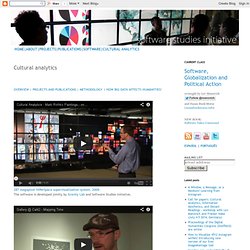

Www.kulturoznawstwo.uni.wroc.pl/wp-content/uploads/Jerzy-Kmita.pdf. Analiza Trzech Wielkich Cywilizacji. Tym razem została dokonana analiza wykresów z wykorzystaniem narzędzi: Google Ngram Viewier, Google Trends, Onemiliontweetmap, Icerocket i Social mention dotyczy trzech starożytnych cywilizacji: Grecji , Rzymu i Egiptu.

Pod uwagę wzięliśmy także wydarzenia historyczne , które miały miejsce przy wyodrębnionych wykresach. Grecja: Analizując wykres dotyczący Grecji największe zainteresowanie dorobkiem tego państwa z czasów starożytności i nim samym przypada na okresy: - Do 1809 roku – Pacyfikacja ponad 14 powstań greckich. Grecja była częścią Turcji. - Rok 1864 – Powstanie Francuskiej Szkoły Archeologicznej w Atenach , która zajmowała się wykopaliskami w basenie Morza Śródziemnego. - Lata 1871 – 1873 H. . - 1874 – 1876 – Schliemann prowadził wykopaliska na terenie Grecji , w Mykenach gdzie odkrył 5 bogato wyposażonych grobowców , które uznał za miejsca pochówku Agamemnona i jego towarzyszy.
. - Prace wykopaliskowe prowadził również Artur Evans – początek XX wieku. Rzym: - rozwój kinematografii np. The representation of women in the videogame industry is at its lowest in over a decade. What's going wrong? The number of female gamers may be on the rise – thanks in part to the explosion of social and mobile gaming, as well as the broad appeal of Nintendo’s Wii – but the opposite is true of women occupying jobs in the industry.

In fact, according to Creative Skillset’s most recent survey, which took place in 2009, just six per cent of the videogame industry’s workforce are women – a figure half that of the previous survey, which recorded 12 per cent in 2006. It’s an uncomfortable statistic, and a disheartening slide, especially for an industry currently so energised by the potential of new business models and new demographics. It’s also concerning given the fact that the same survey revealed creative media industries as a whole boast a far healthier female contingent of 42 per cent. Clearly, something is going wrong. It could lie in a failure to communicate videogame career paths to children in school, an incompatibility between lifestyle and working hours, or a lack of opportunities. Museum of obsolete Objects. Jimmy Wales, Wikipedia, Learning Without Frontiers, London. The History of Wikipedia (in two minutes)
What is Metadata? Cultural Institute. Visual analytics. Visual analytics is an outgrowth of the fields of information visualization and scientific visualization that focuses on analytical reasoning facilitated by interactive visual interfaces. [1] Overview[edit] Visual analytics is "the science of analytical reasoning facilitated by visual interactive interfaces. " [2] It can attack certain problems whose size, complexity, and need for closely coupled human and machine analysis may make them otherwise intractable.[3] Visual analytics advances science and technology developments in analytical reasoning, interaction, data transformations and representations for computation and visualization, analytic reporting, and technology transition. [4] As a research agenda, visual analytics brings together several scientific and technical communities from computer science, information visualization, cognitive and perceptual sciences, interactive design, graphic design, and social sciences.
Topics[edit] Scope[edit] Analytical reasoning techniques[edit] Cultural Analytics. 287 megapixel HIPerSpace supervisualization system, 2009- The software is developed jointly by Gravity Lab and Software Studies Initiative.

Mapping Time exhibition at Calit2, Fall 2010 Cultural Analytics is the use of computational and visualization methods for the analysis of massive cultural data sets and flows. The concept of cultural analytics was developed by Lev Manovich in 2005 and the term itself was introduced in 2007. At Software Studies Initiative we are focusing on the theoretical questions and practical research in one area of cultural analytics - using digital image processing and visualization for the exploratory analysis of large image and video collections. Here are some of the questions which drive our work: Theory: - How can work with "big cultural data" can help us to question traditional assumptions and concepts in humanities and social sciences - What new theoretical concepts and models do we need to deal with the mega-scale of born-digital culture? Practice: Links: Digital Ethnography. Visualizing anthropology.